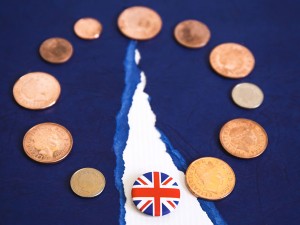
A week of surprises and signs of future policy tightening
On the crest of a wave
Sterling had a good week. There: it isn’t often that could have been said in the last year or so. But in fact the pound has had a good fortnight and a good month too. In the last seven days it trousered an average gain of 3.2% and, in the last month, 4.2%. The pound’s weekly gains included seven Japanese yen, four Swiss cents, three and a half US cents and nearly three euro cents. So what is going right for the currency?
Prices and jobs
Although Britain’s overall performance is lagging behind its peers in the G7 group of major countries, other important economic indicators released during the week were reasonably positive for the currency. Inflation accelerated to 2.9% in August. That is not great news for most people but it does increase the pressure on the Bank of England to increase interest rates in pursuit of its 2% inflation target.
A fall in the rate of unemployment to 4.3% took joblessness to a fresh four-decade low. That is a whisker below the 4.4% unemployment rate in the States and less than half the euro zone’s 9.1%. Average earnings were up by an annual 2.1%, nowhere near enough to keep pace with prices but still on an upward trend.
Monetary policy
The last time UK interest went up was in July 2007, when Bank Rate rose to 5.75%. By March 2009 it was down to 0.5%. Over the last four or five years there have been several hints by the Bank of England that the time for a rate increase might be getting closer. They all came to nothing; indeed the last move by the BoE in August 2016 was to halve Bank Rate to 0.25% in reaction to the Brexit vote.
Last week the bank once again suggested that a rate increase could be in the offing “in coming months”. And this time investors are taking the threat seriously.
The pressures
The BoE is supposed to keep inflation close to 2%. The only tools at its disposal are interest rates and, in the last eight years, the money-creation device known as quantitative easing. The bank must also, however, avoid choking the economy or increasing unemployment unduly. These last two pressures are what has led it to leave rates so close to zero for so long.
At last, it seems, the inflationary pressure is about to trump the desire for employment and growth. A first logical step would be to reverse last year’s “emergency” cut and take Bank Rate back up to 0.5%. Thereafter, further increases would undoubtedly be small and infrequent but the trend would be upwards.
The implications for sterling
Towards the end of last week investors became hugely excited at the prospect of UK rates preparing to follow US and Canadian rates higher. The effect of their excitement was exaggerated by the fact that, until very recently, everyone had been convinced that sterling was headed for the knacker’s yard — parity with the euro, parity with the US dollar, you will have heard the predictions of doom.
One can but guess whether that will indeed turn out to be the case when Brexit actually happens, but that event is well down the road. In the meantime, sterling has proved that it can go up as well as down. But its success could prove short-lived if, in November or December, the Old Lady does not deliver the interest rate carrot she is now dangling in front of investors.
Sarah, Senior Account Manager at Moneycorp
Moneycorp is one of the largest international payment companies supporting over 90 currencies. Last year Moneycorp traded over £22.6 billion worth of international money transfers. Find out how Moneycorp can help you with your international transfer here.






